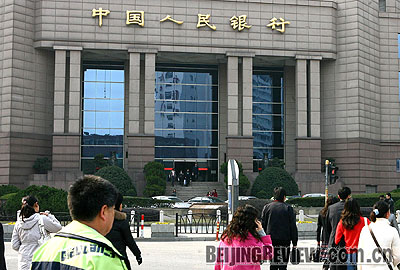|

LIQUIDITY ASSURANCE: The People's Bank of China, the central bank, has made efforts to add liquidity to the banking system, including reducing the frequency of central bank bill auctions
The first step to recovery is admitting you have a problem. In the wake of the Wall Street-generated global financial crisis, China has taken that first step, realizing that its once-robust economy is currently in or bracing for a slowdown of its own-and possibly a sharp one.
The second step to recovery has been for China's central bank to add liquidity to the credit market. The central bank had cut interest rates twice in October and once in September and also lowered the reserve requirement ratio twice in the past two months. And now it is changing the frequency of its central bank bill auctions, another effective means of managing liquidity.
The central bank said on October 27 that it would start auctioning the one-year central bank bills to commercial banks every two weeks instead of weekly as it has done in the past four years.
Given that the central bank so far has siphoned more than 2 trillion yuan ($292.6 billion) from the banking system through the sale of one-year bills since October 2007, cutting their issuance frequency in half would mean injecting liquidity of around 1 trillion yuan ($146.3 billion) into the markets.
Guo Tianyong, a banking professor at the Central University of Finance and Economics, told Beijing Review that such a move comes as part of the country's efforts to ease the monetary environment for the economy to regain lost ground.
"It would render risk-sensitive commercial banks more able to disburse financing, thus benefiting cash-strapped small and medium-sized enterprises," Guo said.
Feng Chen, a senior bond analyst at China Galaxy Securities Co. Ltd., agreed with Guo and cited the reduced frequency of the bill auctions as an additional way of propping up the economy.
"A more fluid credit market would put China in a better place to shake off overseas downward pressures," Feng told Beijing Review.
| 